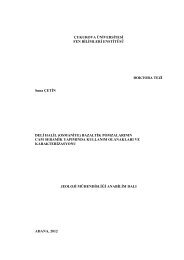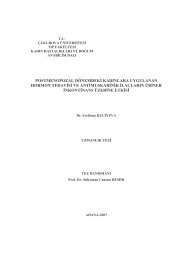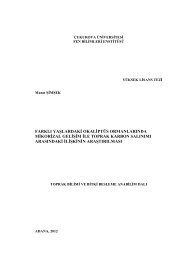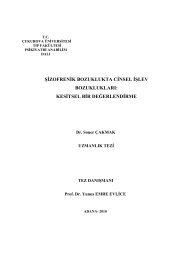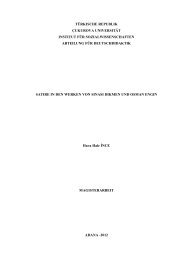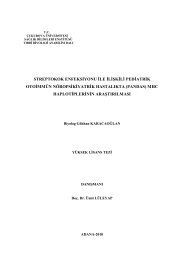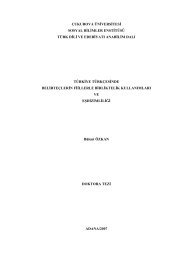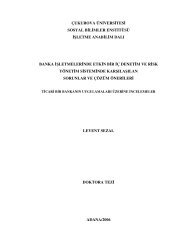ÇUKUROVA UNIVERSITY INSTITUTE OF NATURAL AND APPLIED ...
ÇUKUROVA UNIVERSITY INSTITUTE OF NATURAL AND APPLIED ...
ÇUKUROVA UNIVERSITY INSTITUTE OF NATURAL AND APPLIED ...
Create successful ePaper yourself
Turn your PDF publications into a flip-book with our unique Google optimized e-Paper software.
2. POWER QUALITY Mustafa İNCİ<br />
2.2.6. Transients<br />
A transient is “that part of the change in a variable that disappears<br />
during transition from one steady state operating condition to another”. Another<br />
word in common usage that is often considered synonymous with transient is<br />
“surge” (Dugan et al, 2003). Transients can be be classified into two categories:<br />
“impulsive” and “oscillatory”:<br />
• Impulsive transients: Sudden, non-power frequency change in the steady<br />
state condition of the voltage, current or both<br />
• Oscillatory transients: Voltage or current whose instantaneous value<br />
changes polarity rapidly.<br />
2.2.7. Interruption<br />
In the European standard EN 50160 two terms are used (Nielsen et al., 2002):<br />
• Long interruptions: longer than three minutes.<br />
• Short interruptions: up to three minutes.<br />
Interruptions are typically caused by different types of faults e.g. malfunction<br />
of protection equipment or lightning. In a system without redundancy a fault often<br />
leads to a long interruption, which requires manual intervention. Short interruptions<br />
are often caused by automatic reclosing after a fault. Short interruptions below three<br />
minutes are normally considered a voltage quality problem. Interruptions are a severe<br />
power quality problem, but in a wide range of industrial countries interruptions occur<br />
very rare, because of redundancy and high maintenance of the grid (Nielsen et al.,<br />
2002).<br />
10



